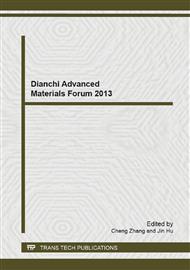p.247
p.252
p.257
p.261
p.266
p.271
p.276
p.280
p.286
On the “Ceramic Constrained by Metal” Composite Materials
Abstract:
Ceramics are widely used in every field of contemporary industrial because of its many excellent properties. However, its mechanical property is great brittleness and small toughness for the characteristics of internal chemical bond, which restricts its application range to a large extent. Therefore, how to improve mechanical properties of ceramic materials has been attracted a great attention in the relevant area. For ceramics using at room temperature, a method which can avoid brittle failure by metal confinement outside of ceramics is given. And the feasibility of this method is discussed. Three point bending tests were conduct on ZrO2 ceramics with and without lateral confinement separately. Base on the much of experimental conclusion, the bending strength of ceramic with lateral confinement was improved largely.
Info:
Periodical:
Pages:
266-270
Citation:
Online since:
November 2013
Authors:
Keywords:
Price:
Сopyright:
© 2014 Trans Tech Publications Ltd. All Rights Reserved
Share:
Citation:


